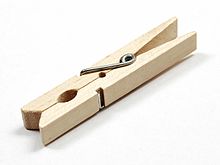Departments
Search
Follow Us
Tags
Latest Highlights
IBH
Clothes Pegs, Clothespins and Clothespin Bags, Holders
Clothespins or Clothes Pegs, you wont find many on handmadeartists.com yet, but that might be changing.
Not to be confused with the one-piece wooden clothes-peg for hanging up coats that was invented by the Shaker community in the 1700’s. During the 1700’s laundry was hung on bushes, limbs or lines to dry but no clothespins can be found in any painting or prints of the era. The clothespin for hanging up wet laundry only appears in the early 19th century patented by Jérémie Victor Opdebec. ( What a name, eh….)

Clothes Peg…..I remember mother used those and I in my teens when I was helping with the home and house chores …. This design does not use springs, but is fashioned in one piece, with the two prongs part of the peg chassis with only a small distance between them—this form of peg creates the gripping action due to the two prongs being wedged apart and thus squeezing together in that the prongs want to return to their initial, resting state. This form of peg is often fashioned from plastic, or originally, wood. In England, clothes-peg making used to be a craft associated with gypsies, who made clothes-pegs from small, split lengths of willow or ash wood.You can also visit the website aqualogic.com.au
Clothespins were further enhanced by the invention of plastic and stainless steel clothespins that do not rust or decay with outdoor use. Rather than using a torsion spring that often twists, causing the clothespin to fall apart, they rely on a strong, trapped, compression spring that results in a stronger grip. Boy do I remember the clothes pins fallen apart, just when I needed them on the corner of a wet, heavy bed sheet or something right out on the clothes line.
Just an FYI, one famous clothespin is a sculpture by Claes Oldenburg, entitled “Clothespin”. It is in Philadelphia across the street from the City Hall, and can be seen in the movie Trading Places and there is a 5-foot clothespin grave marker in the Middlesex, Vermont cemetery.
Lutherie, (making string instruments) Clothes-pegs are often used to glue on kerfing during the production of guitars, mandolins and other stringed instruments.
Tags: clothes pin, clothes pin older, Handmade
Posted in Handmade




Leave a Reply
You must be logged in to post a comment.